Themed collection Supercapacitors

Metal oxide-based supercapacitors: progress and prospectives
We investigate the principal elements affecting the properties of bimetallic oxide electrodes to reveal the relevant energy storage mechanisms.
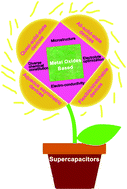
Nanoscale Adv., 2019,1, 4644-4658
https://doi.org/10.1039/C9NA00543A
Current progress achieved in novel materials for supercapacitor electrodes: mini review
This mini-review presents a summary of recent developments in supercapacitor research and technology, including all kinds of supercapacitor design techniques using various electrode materials and production methods for addressing energy storage and harvesting issues.
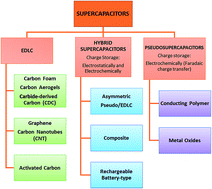
Nanoscale Adv., 2019,1, 2817-2827
https://doi.org/10.1039/C9NA00345B
Progress in supercapacitors: roles of two dimensional nanotubular materials
Overcoming the global energy crisis due to vast economic expansion with the advent of human reliance on energy-consuming labor-saving devices necessitates the demand for next-generation technologies in the form of cleaner energy storage devices.
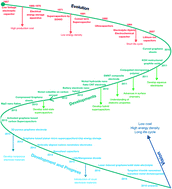
Nanoscale Adv., 2020,2, 70-108
https://doi.org/10.1039/C9NA00307J
Birnessite based nanostructures for supercapacitors: challenges, strategies and prospects
In the past few years, intensive attention has been focused on birnessite based electrodes for supercapacitors.
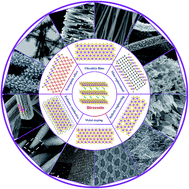
Nanoscale Adv., 2020,2, 37-54
https://doi.org/10.1039/C9NA00547A
Engineering doping-vacancy double defects and insights into the conversion mechanisms of an Mn–O–F ultrafine nanowire anode for enhanced Li/Na-ion storage and hybrid capacitors
Doping-vacancy double-defective Mn–O–F ultrafine nanowires power advanced Li/Na-ion capacitors with dominant conversion mechanisms.
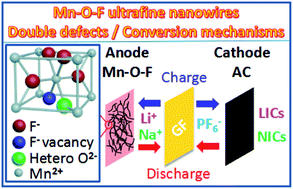
Nanoscale Adv., 2019,1, 4669-4678
https://doi.org/10.1039/C9NA00521H
Predicting the capacitance of carbon-based electric double layer capacitors by machine learning
Machine learning (ML) methods were applied to predict the capacitance of carbon-based supercapacitors.
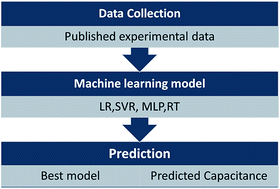
Nanoscale Adv., 2019,1, 2162-2166
https://doi.org/10.1039/C9NA00105K
Phytic acid controlled in situ synthesis of amorphous cobalt phosphate/carbon composite as anode materials with a high mass loading for symmetrical supercapacitor: amorphization of the electrode to boost the energy density
Phytic acid (PA) mediates the controlled synthesis of amorphous cobalt phosphate/carbon (CoPi/C) composite which works in both the positive and negative potential ranges, making it possible to assemble a symmetrical supercapacitor (SSC) device.

Nanoscale Adv., 2020,2, 4918-4929
https://doi.org/10.1039/D0NA00670J
Fabrication of a vanadium nitride/N-doped carbon hollow nanosphere composite as an efficient electrode material for asymmetric supercapacitors
N-doped carbon covering on the surface of VN inhibits the oxidation of VN in alkaline electrolyte and increases the electrical conductivity of composite. Therefore, favorable electrochemical behaviors of the V2O3/C//VN/NCS device are exhibited.

Nanoscale Adv., 2020,2, 3865-3871
https://doi.org/10.1039/D0NA00288G
A hierarchical porous P-doped carbon electrode through hydrothermal carbonization of pomelo valves for high-performance supercapacitors
Porous carbon materials are synthesized from pomelo valves by the hydrothermal activation of H3PO4 followed by simple carbonization.

Nanoscale Adv., 2020,2, 3284-3291
https://doi.org/10.1039/D0NA00211A
Facile hydrothermal synthesis of porous MgCo2O4 nanoflakes as an electrode material for high-performance asymmetric supercapacitors
A simple hydrothermal route with a post annealing treatment was used to prepare MgCo2O4 porous nanoflakes with excellent electrochemical performances.

Nanoscale Adv., 2020,2, 3263-3275
https://doi.org/10.1039/D0NA00353K
A poly(3,4-propylenedioxythiophene)/carbon micro-sphere-bismuth nanoflake composite and multifunctional Co-doped graphene for a benchmark photo-supercapacitor
Efficient storage of sunlight in the form of charge is accomplished by designing and implementing a photo-supercapacitor (PSC) with a novel, cost-effective architecture.
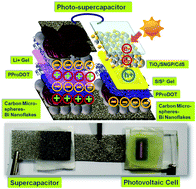
Nanoscale Adv., 2020,2, 2925-2942
https://doi.org/10.1039/D0NA00103A
3D hierarchical self-supported NiO/Co3O4@C/CoS2 nanocomposites as electrode materials for high-performance supercapacitors
Multi-dimensional nanomaterials have drawn great interest for application in supercapacitors due to their large accessible surface area.

Nanoscale Adv., 2020,2, 2785-2791
https://doi.org/10.1039/D0NA00013B
In situ carbon-supported titanium dioxide (ICS-TiO2) as an electrode material for high performance supercapacitors
Supercapacitors have attracted significant attention in the last few years as they have the capability to fulfill the demand for both power and energy density in many energy storage applications.

Nanoscale Adv., 2020,2, 2376-2386
https://doi.org/10.1039/D0NA00014K
One-step facile synthesis of nickel–chromium layered double hydroxide nanoflakes for high-performance supercapacitors
Rational design and synthesis of efficient electrodes with pronounced energy storage properties are crucial for supercapacitors.
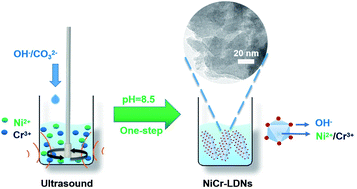
Nanoscale Adv., 2020,2, 2099-2105
https://doi.org/10.1039/D0NA00178C
Hierarchical structure N, O-co-doped porous carbon/carbon nanotube composite derived from coal for supercapacitors and CO2 capture
The energy and environmental crises have forced us to search for a new green energy source and develop energy storage and environmental restoration technologies.
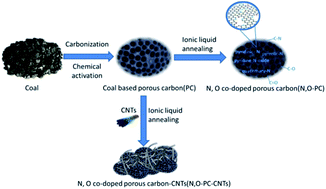
Nanoscale Adv., 2020,2, 878-887
https://doi.org/10.1039/C9NA00761J
Three-step-in-one synthesis of supercapacitor MWCNT superparamagnetic magnetite composite material under flow
Composites of multi-walled carbon nanotubes (MWCNTs) and superparamagnetic magnetite nanoparticles, Fe3O4@MWCNT, were synthesized in DMF in a vortex fluidic device (VFD).

Nanoscale Adv., 2019,1, 3761-3770
https://doi.org/10.1039/C9NA00346K
Facile synthesis of carbon nanobranches towards cobalt ion sensing and high-performance micro-supercapacitors
A facile strategy is developed for fabrication of carbon nanobranches (CNBs) via in situ pyrolysis of starch.
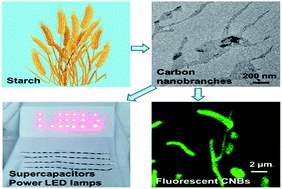
Nanoscale Adv., 2019,1, 3614-3620
https://doi.org/10.1039/C9NA00181F
In situ construction of dual-morphology ZnCo2O4 for high-performance asymmetric supercapacitors
The morphologies of ZnCo2O4 were controlled by an ultrasonic treatment to achieve high-performance supercapacitors.
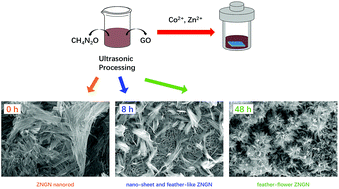
Nanoscale Adv., 2019,1, 3086-3094
https://doi.org/10.1039/C9NA00230H
Superbat: battery-like supercapacitor utilized by graphene foam and zinc oxide (ZnO) electrodes induced by structural defects
The current work presents a hybrid type of energy storage device composed of both graphene foam and zinc oxide electrodes, which exhibits both the electrochemical performance of a supercapacitor with a relatively higher power density, and a battery with a relatively higher energy density as compared to each individual component as single devices.
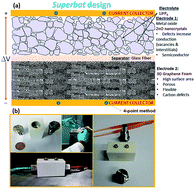
Nanoscale Adv., 2019,1, 2586-2597
https://doi.org/10.1039/C9NA00199A
Three-dimensional nickel vanadium layered double hydroxide nanostructures grown on carbon cloth for high-performance flexible supercapacitor applications
The electrochemical performance of the flexible solid-state supercapacitor device comprising ultrathin Ni–V layered double hydroxide nanosheets grown on carbon cloth showed a negligible change upon bending and twisting of the device.
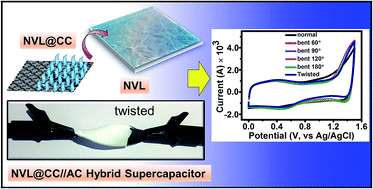
Nanoscale Adv., 2019,1, 2400-2407
https://doi.org/10.1039/C9NA00152B
A high-energy sodium-ion capacitor enabled by a nitrogen/sulfur co-doped hollow carbon nanofiber anode and an activated carbon cathode
Hierarchically nanostructured N/S-co-doped hollow carbon nanofibers are fabricated as anodes for high-energy Na-ion capacitors.
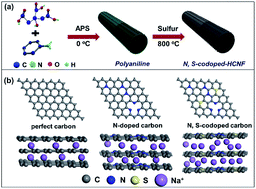
Nanoscale Adv., 2019,1, 746-756
https://doi.org/10.1039/C8NA00219C
Heterostructure of two different 2D materials based on MoS2 nanoflowers@rGO: an electrode material for sodium-ion capacitors
A MoS2 nanoflower@rGO composite has been prepared using a simple and scalable hydrothermal method followed by an ultra sonication process.
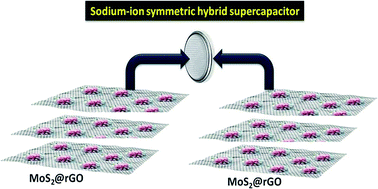
Nanoscale Adv., 2019,1, 334-341
https://doi.org/10.1039/C8NA00104A
Silver nanowire/nickel hydroxide nanosheet composite for a transparent electrode and all-solid-state supercapacitor
Silver nanowire (Ag NW) based composites have shown a great potential not just in transparent electrodes but in diverse functional applications.
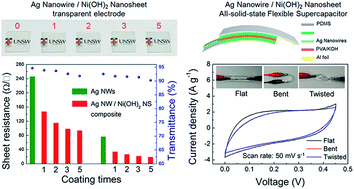
Nanoscale Adv., 2019,1, 140-146
https://doi.org/10.1039/C8NA00110C
About this collection
This topical collection highlights nanoscale-based approaches to supercapacitors published so far in Nanoscale Advances. It includes reviews on the progress made so far, and original research showcasing the latest thinking on electrodes, synthesis and performance.